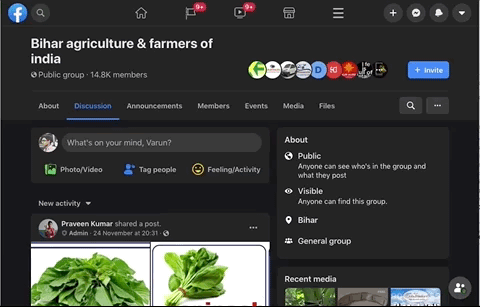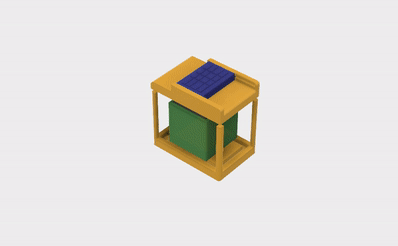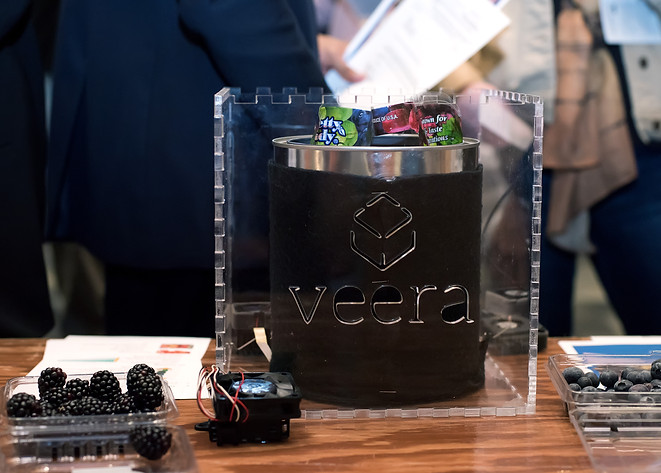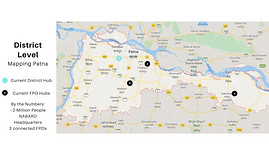Bridging the gap from farm to fork.

VEERA.
Veera is a cold food storage solution that enhances the power of evaporative cooling by controlling environmental conditions outside the unit. The basic principles of evaporative cooling are based on the Zeer Pot, which has existed for over 5000 years. The VeeraPot is composed of a highly convective inner layer, a porous layer with high water capacity, and an outer layer that allows evaporated water to escape. To cool the enclosed space in the center, heat first strikes the unit's outer surface, raising its external temperature. As a result, the raised kinetic energy of the water medium increases evaporation near the surface.
CURRENT STATUS:
ACTIVE
Empathize
Trips to India. Research cold storage market. Speak to stakeholders.
Ideate + Design
Generate concepts. Experiment in the makerspace. Look for storage analogies.
Test + Iterate
Find interested farmers. Analyse their behaviour. Refine the box. Create a dialogue.
Scale
Coming Soon!
EMPATHIZE
I stumbled across the cold storage problem in India on a visit to my grandparents' house. In Ahmedabad, India, I happened to be out helping my grandfather with groceries at an open-air mandi when I noticed several intermediaries disposing of vast quantities of their produce. This sparked curiosity, and I would find out that 40% of produce in India goes to waste due to a lack of cold storage. Based in Chapel Hill, North Carolina, it would be difficult to begin to go after such a physically distant problem. There was only one way around this: do as much research in the US as possible, and get back to India.

STATESIDE RESEARCH

Facebook Groups
How were Facebook Groups used?
Several hundred groups dedicated to agriculture and smallholders.
Joined several groups in the most agrarian states of India.
Comb through members to find farmers who spoke Hindi or English.
Posted several questions to start dialogues about storage issues.
What were the results?
Cheap, quick way to dive deeper into the problem.
Able to generate responses from 40-50 farmers at a time.
Several phone conversations about the exploitation of smallholders.
Triggered the organization of a trip to India to get a closer look.

INDIA-SIDE RESEARCH

Arriving in Mirchi Village, Bihar

Commencing the first Veera Farmer Forum

A building sold to a distributor on false pretences of cold storage

Arriving in Mirchi Village, Bihar
Farmer Forums
How were Farmer Forums used?
Town hall style meetings were advertised through villages in Bihar.
60-70 farmers attended for 3 hours with food and drink provided.
Select farmers would allow me to visit their plots and talk 1:1.
Farmers could continue to submit frustrations via WhatsApp.
What were the results?
Over 100 farmers were interviewed and stayed for 6 hours per village.
In-depth stories and estimations about the impact of no cold storage.
Individual relationships were forged that are maintained today.
Several farmers expressed interest in helping design a solution.
IDEATE + DESIGN
After the initial rounds of research, I began to think about potential ways to design a better system for cold storage. The following four questions were my guide at the time.
How did people keep stuff cool in history?
Are there analogous man-made structures that must be kept cool internally?
How do people or animals keep stuff cool in other parts of the world?
Can we use renewable energy sources to power a cooling system?

Zeer Pot
The Zeer Pot is a 5000 year old product that has become an icon of the rural world rural world. It is an evaporative cooler that helps to extend the lifespan of produce by a few days. Critically, it lacks the ability to cool produce if there are humid environmental conditions.

First Prototype
Outdoor casing from from perforated, laser cut acryclic.
Sand-like substance replaced with super absorbent felt.
Inner casing made from aluminium held together through screws.
Dehumidification system made from upcycled hair dryer components.
The Veera Pot
Modernized Zeer Pot that dehumidifies air at the surface.
Solar powered and can use any type of water.
Made of lightweight materials such as aluminium.
Modular design to allow for ease of replacement and assembly where each component clicks together like Lego.
Inspiration from capillary action in the human body to distribute water more effectively throughout the interior wall of the pot.
Portable size and could be easily attached to bikes or bullock carts.
The Result & Takeaway

Prototype Ease of Build = B+ || Prototype Appearance = B+ || Prototype Functionality = F
Ultimately, this prototype could not even hold water sufficiently, let along provide a form of evaporative cooling. What it did enable my team and I to understand was that we had thought about our materials slightly too simplistically. It did give us a physical concept that we sent digitally to some of our partners in India, who gave us the following feedback:
"The unit must be at least 3 times larger to be of use to any individual farmer."
"The parts do not look that easy to replace and it needs to be serviceable in rural areas."
"Needs to be more robust to withstand intense wear and tear due to harsh conditions."
TEST + ITERATE
Priority #1: Work out evaporative cooling.
We needed some cash to develop a more functional prototype. So we built an appearance prototype to give people an idea of what our concept does at the Carolina Pitch Party. Served inside the unit was, of course, fresh produce!

We pitched to 100 judges for 60 seconds each with the objective of collecting tokens from as many as possible. We finished with a record number of tokens and won the social impact category. Now it was time to build!

Using the newfound resources and network, we generated a new design and began building a functional prototype. We aimed to take this one with us to India to start another round of testing focused on the unit's performance.

Co-founder Nick Ashcraft building the new housing of the prototype 2.0
Priority #2: Test Key Assumptions
Throughout this process of iterating on the prototype, I also decided to make inroads on how we would actually distribute and reach the far-flung places in rural India that we were targeting. Through a mix of phone interviews, secondary research, and surveys, we developed a list of assumptions that would help us define our project's direction.
Our newly designed unit will be able to cool internally by at least 10 degrees celcius under extreme conditions.

Tested by creating similar environmental conditions to rural Bihar in a non-ventilated room while measuring the water evaporation rate.
Failure
Units did not function as well as expected, only cooling by 5 degrees celcius with too fast of a rate of evaporation.
We can distribute and reach rural farmers through the organization of Farmer Producer Organisations and a partnership with NABARD.

Tested by using geospatial mapping data to define which FPO hubs would enable the largest coverage of farmers. Plans run through partners in India.
Success
FPOs are a reliable and well distributed means of reaching the end user. As a cooperative model, it goes directly to farmers without the need of middlemen.
Our product will be cost-effective and allow for an ROI period of 1 harvest cycle. In turn, this will increase farmer revenues by >50%.

Tested through posts on WhatsApp Business to conduct A/B testing on various price points. Additionally, met with Indian govt. officials to determine if subsidy was possible.
Failure
Price point remained too high throughout testing, with majority of the interest fading after details of price were explained, despite conservative ROI explanations.
Current Stage

I decided to focus on building a unique rural distribution system based on partnerships to bootstrap our way to revenue, and eventually to build out our cold storage unit.
.jpg)


Fenik
Cold Storage Providers
National Association for FPOs
Introduces us to FPOs
NABARD
Data & Subsidy Provider
We are now trying to find the mean population center of each district in Bihar. Through this, we are currently testing whether or not there are village level distributors who could transport goods from the population center of their district to their village using just one vehicle. We are using Fenik's cold storage unit to build demand for modular, small cold storage and test our rural distribution network. Over the next several months, we hope to collect data around the improvements to the farmers and their stories about using the Fenik product and their ease of receiving it through this new system. Stay tuned for updates!